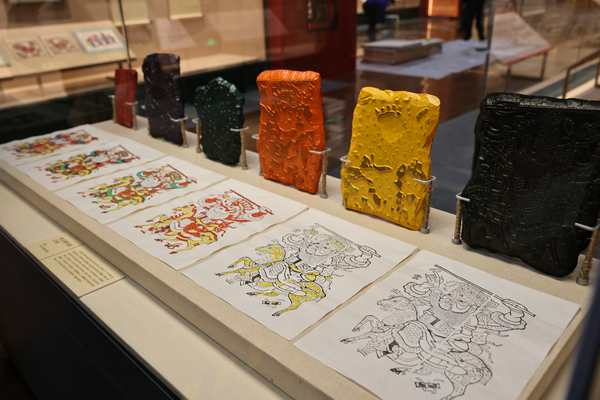

After the People's Republic of China was founded in 1949, and with the support of the Ministry of Culture, more new-style works were created, alongside the more traditional themes. The new-style works cover themes on industrial and agricultural work, unity of the army and the people, healthcare and children's education.
In the 1980s, art publishers started to move away from their New Year picture business to other, more lucrative, sectors.
The third part of the exhibition focuses on New Year pictures that highlight traditional festivals, people's daily work, four seasons and current affairs.
Pictures featuring scenery and places of interest drew on traditional Chinese painting techniques and showed the influence of the Western artistic technique of linear perspective.
Flowers, birds, plants and insects, which were themes in traditional Chinese paintings, also featured in New Year pictures, often joined by auspicious elements.
In the final part of the exhibition, visitors can see historical figures and events, legends, as well as scenes and actors from traditional Chinese operas, in New Year pictures, with some being produced in a serial form.
During the late Qing Dynasty, and from the early 1910s to '40s, news-themed New Year pictures appeared, as novel things kept emerging during those turbulent times.
Alongside the pictures, the technique for making such pictures, which includes woodblock printing and a combination of woodblock printing and painting, are also displayed. The exhibition will run until March 29.